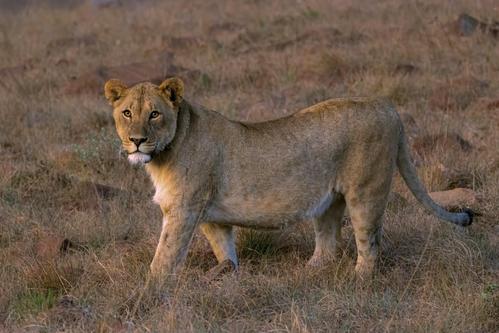411
From Farmland to Wild Frontier: The Big Five Return to South Africa’s Babanango Game Reserve

Nestled in the rugged hills of KwaZulu-Natal, Babanango Game Reserve is South Africa’s most exciting new Big Five safari destination — and a living testament to what can happen when conservationists, communities, and philanthropists come together to rewild history.
Less than a decade ago, the land surrounding the White Umfolozi River was little more than overgrazed farmland. Most native species had long vanished, the legacy of colonial conflict and overuse. But today, lions roar across golden grasslands, rhinos graze beneath candelabra trees, and herds of buffalo roam through valleys that were once silent.
The transformation began in 2018, when three Zulu community trusts partnered with German philanthropists Barbara and Hellmuth Weisser, along with the NGO Conservation Outcomes. Their goal? To return wildlife to this 20,000-hectare stretch of land and build a self-sustaining nature reserve that would also uplift local communities.
The result is breathtaking: more than 5,000 animals now roam Babanango, including all members of the Big Five — lion, leopard, rhino, elephant, and buffalo. The reintroduction of apex predators was carefully managed, with lions and rhinos arriving in 2022 and elephants completing the Big Five lineup in mid-2023.
A Safari Destination Like No Other
Field guides like Eduan Balt call the bushveld their “newspaper,” reading footprints and animal behavior to track movement. On a single safari, you might spot lion cubs tumbling through the grass, buffalo cooling off at a pond, or rhinos grazing behind groves of wild anise and euphorbia.
But Babanango isn’t just about wildlife. It’s a story of reconciliation between people and nature. Zulu communities who once struggled with land access now co-own the animals and benefit from eco-tourism profits. Approximately 75% of staff are local, with many in their first salaried jobs. Community trusts receive rental income and will share in 25% of the park’s future profits.
Conservation Meets Community
The African Habitat Conservancy Foundation (AHC), which supports Babanango’s development efforts, has already built 17 solar-powered boreholes and offers vocational training in traditional crafts like beadwork and ceramics — helping nearby villages thrive while maintaining cultural identity.
“The return of these animals is not just symbolic,” says Thina Nyathi, AHC’s manager. “It’s a chance to transform lives.”
Planning Your Visit to Babanango
When to Go:
The park is a year-round destination. Summers (September to April) are warm and lush; winters (May to August) are cooler and drier, ideal for game viewing.
Getting There:
Babanango is a scenic three-hour drive from Durban’s King Shaka International Airport or six hours from Johannesburg’s OR Tambo International.
Where to Stay:
Visitors can choose from four lodges, including the luxurious Madwaleni River Lodge, the rustic Matatane Camp, and the hilltop Zulu Rock Lodge.
What to Do:
Beyond safari drives, guests can enjoy guided bush walks, wildlife monitoring, and even tours of historic Anglo-Zulu battlefields.
Why It Matters
Babanango Game Reserve offers more than just a safari. It’s a blueprint for how conservation can empower communities, restore ecosystems, and reshape South Africa’s tourism landscape. As the first lions born in this part of KwaZulu-Natal in over 150 years bound across the plains, a powerful message echoes: nature, when given the chance, can return — stronger than ever.
{Source: MSN}
Follow Joburg ETC on Facebook, Twitter , TikTok and Instagram
For more News in Johannesburg, visit joburgetc.com















